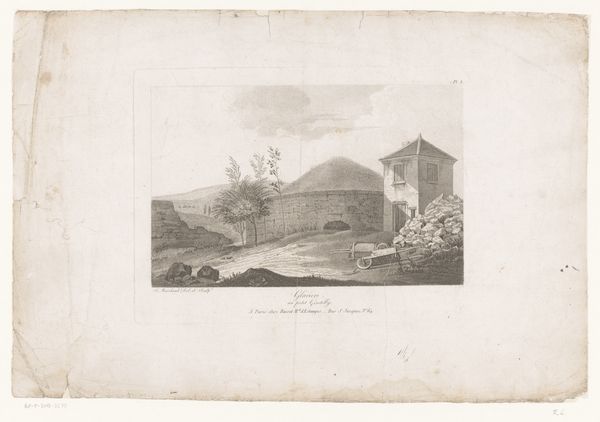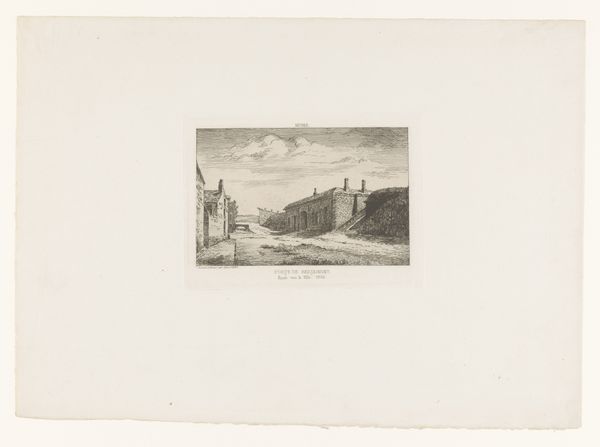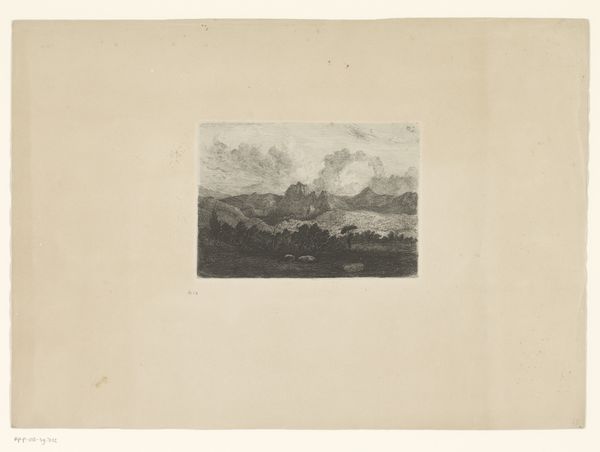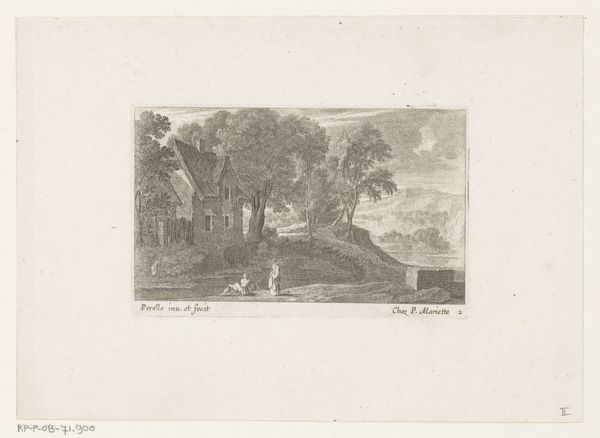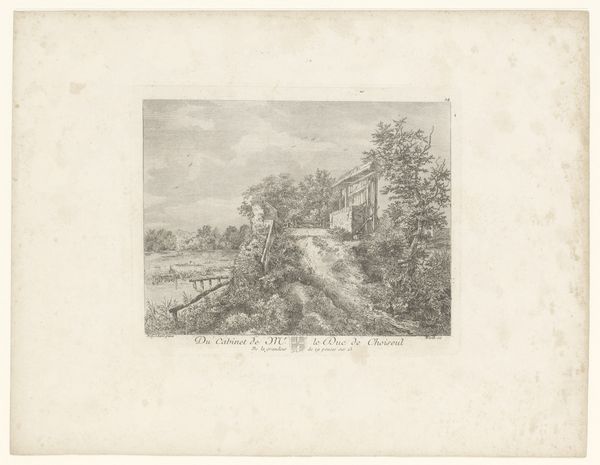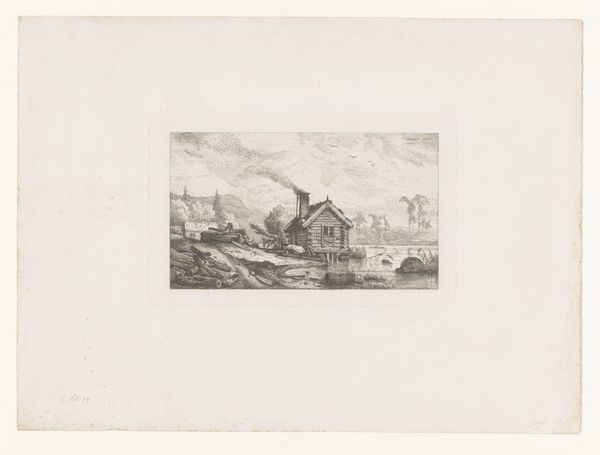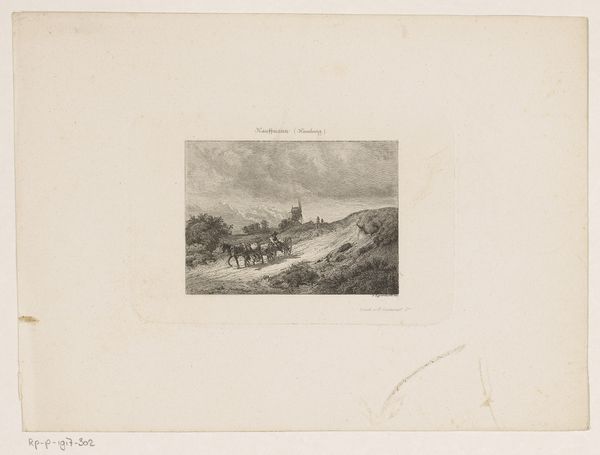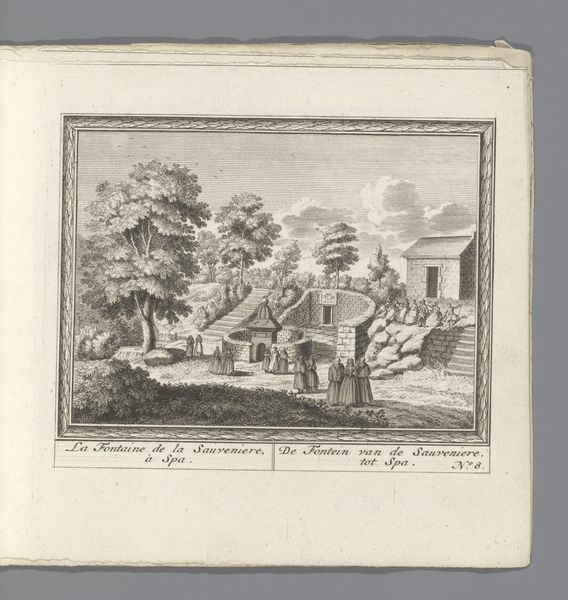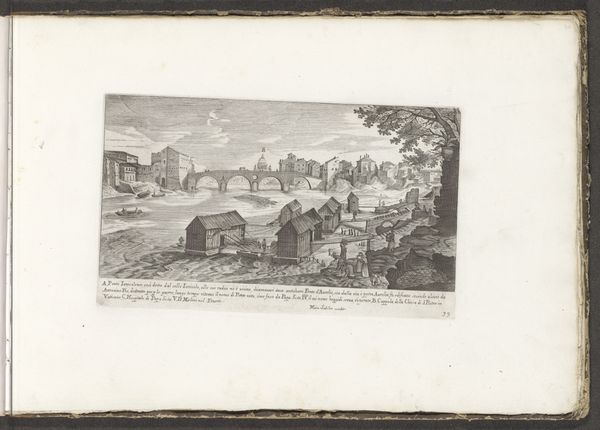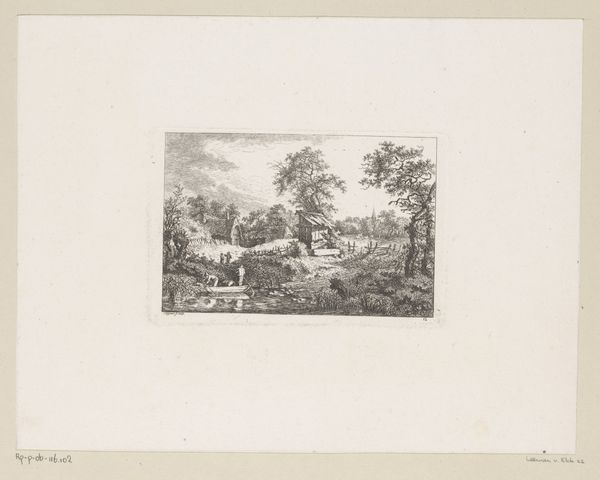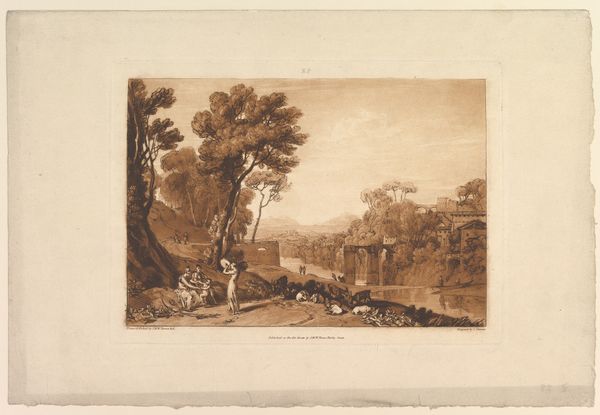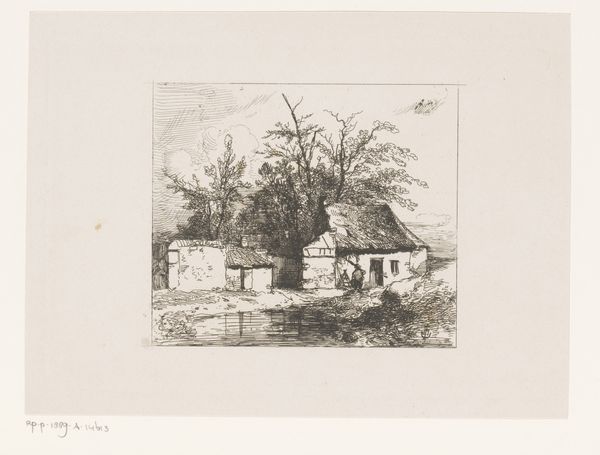
Gezicht op een steengroeve met kalkoven in de buurt van Montmartre c. 1779 - 1845
0:00
0:00
jacquesmarchand
Rijksmuseum
drawing, pencil, chalk
#
drawing
#
neoclacissism
#
landscape
#
pencil
#
chalk
#
cityscape
Dimensions: height 190 mm, width 266 mm
Copyright: Rijks Museum: Open Domain
This drawing depicts a view of a quarry with a limekiln near Montmartre, captured by Jacques Marchand in the late 18th or early 19th century. The scene is dominated by the rugged industrial landscape and the figure of a lone worker. Let us consider the symbol of the quarry itself – an open wound in the earth. We can see it echoed in the mythic image of Prometheus, whose liver was eternally pecked out as punishment for bringing fire to mankind. Just as Prometheus was bound to his rock, the quarry is a place of perpetual extraction, a site where nature is relentlessly mined for its resources. Consider how this relates to the psychological concept of the 'wound' – a site of pain and trauma, but also a source of resilience and transformation. The quarry, this wound on the earth, resonates deeply with our collective memory, evoking both destruction and the relentless drive to create and build. It reminds us that progress often comes at a cost, and that the scars of industry can run deep, both in the landscape and in our collective psyche. This cyclical transformation speaks to the enduring power of symbols to capture and convey complex, often contradictory, aspects of the human experience.
Comments
No comments
Be the first to comment and join the conversation on the ultimate creative platform.
